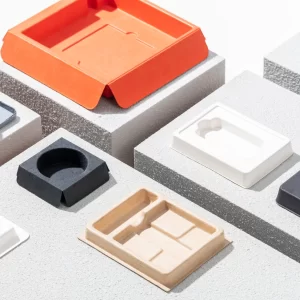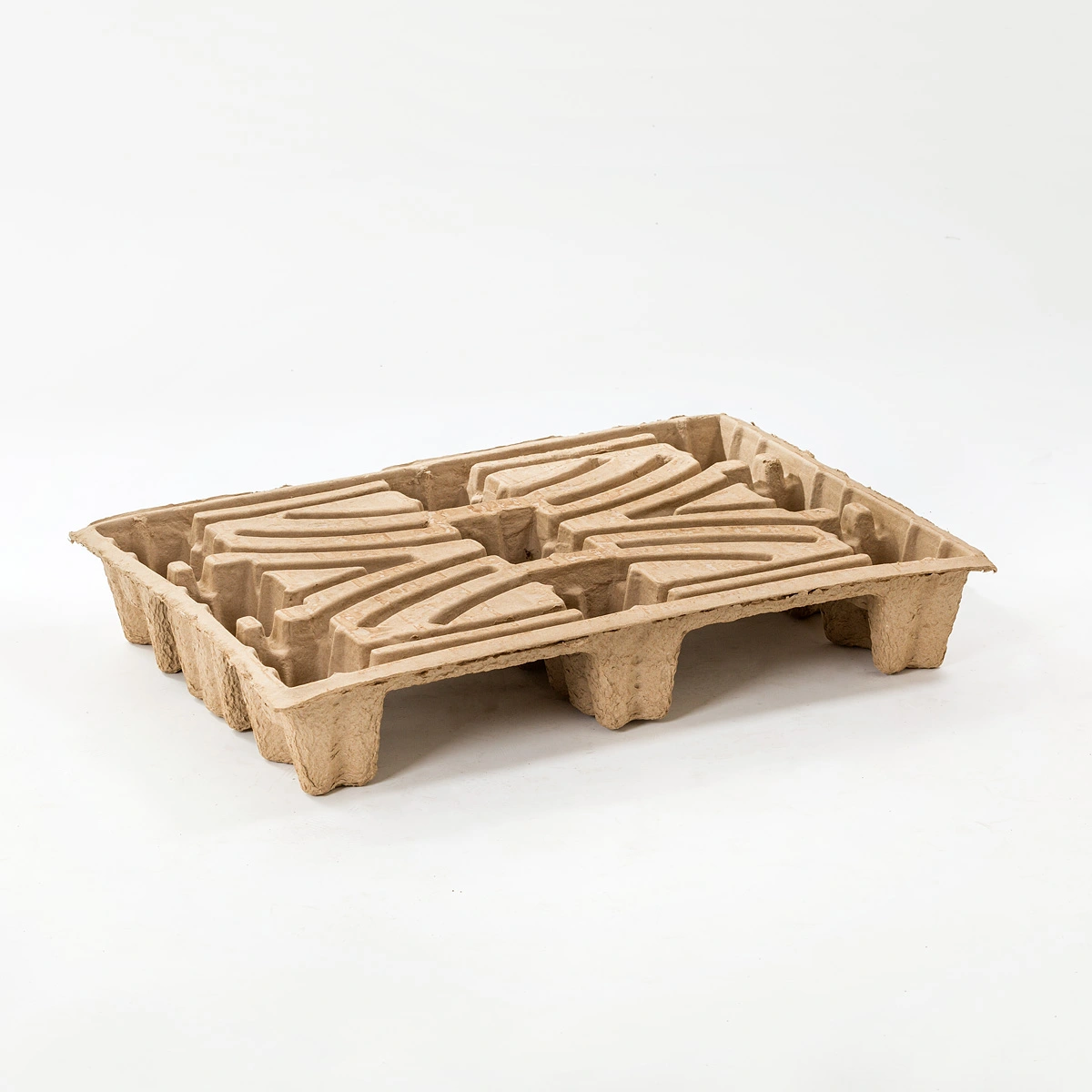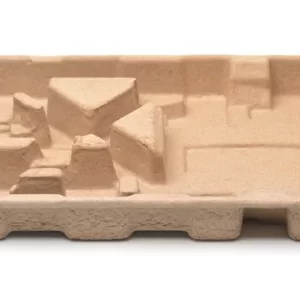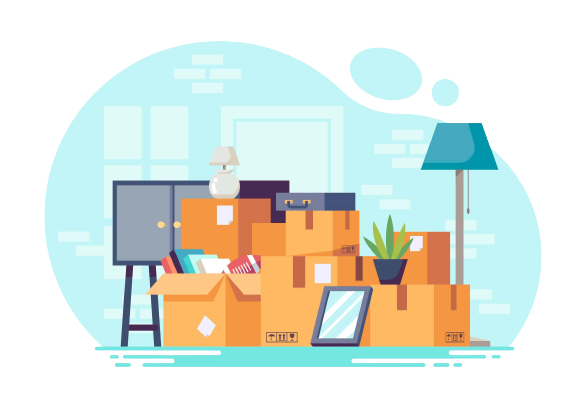As a producer examining sustainable packaging options, you likely know that paper pulp presents an environmentally-friendly choice. In your research into pulp packaging, specifically molded fiber, you have seen many examples of innovative companies utilising it for everything from food containers to cushioning materials. This article provides an introductory overview of pulp packaging, including a brief background, discussion of the pulp molding process and primary material sources, examination of key benefits like recyclability and biodegradability, and a look at the future of pulp packaging with expected growth rates and opportunities. With this foundational knowledge, you will be equipped to determine if paper pulp is the right eco-friendly packaging for your products.
An Introduction to Paper Pulp Packaging
Paper pulp packaging is an eco-friendly alternative to plastic packaging. It is biodegradable and compostable, meaning it breaks down naturally without leaving behind toxic residues. As environmental sustainability becomes increasingly important, paper pulp products provide a promising solution for businesses seeking greener packaging options.
Made from wood fibers, paper packaging pulp includes items such as:
- Egg cartons
- Takeout containers
- Cups
- Plates
- Bowls
The production process involves pulping wood chips into fibers, then reforming and shaping the fibers into packaging products. Additional biodegradable binders and coatings are often added to improve durability and grease resistance.
Unlike plastic, paper pulp packaging will biodegrade in a matter of months. When disposed of properly in a commercial composting facility, paper pulp products break down into carbon dioxide, water, and biomass. They do not leave behind microplastics or other harmful pollutants. For this reason, many municipalities and governments are banning or taxing certain plastic products while promoting sustainable alternatives like paper pulp.
Looking ahead, paper pulp packaging presents an opportunity for brands to demonstrate environmental leadership. By transitioning from plastic to paper pulp, companies can reduce pollution, minimise waste, and build goodwill with eco-conscious consumers. Although currently more expensive to produce, paper pulp packaging may reach price parity with plastic as technologies improve and demand increases.
With its sustainable qualities and potential for cost efficiency, paper pulp packaging is poised to transform how we package and transport all manner of goods. This eco-friendly solution allows us to enjoy the convenience of disposable items without the environmental guilt. For businesses, governments, and individuals seeking to make a positive impact, packaging pulp deserves consideration as an option for a greener future.
What Is Molded Paper Pulp?
Molded paper pulp, also known as molded fiber or paper pulp packaging, refers to products made from recycled paper that has been reduced to pulp, mixed with water, and molded into shape. The pulp is compressed under high heat and pressure into trays, plates, and other shapes.
Paper pulp packaging is an environmentally friendly alternative to plastic and styrofoam. The raw materials are sustainable and biodegradable, as the pulp comes from recycled waste paper and cardboard. The production process is also eco-friendly, using little energy or water. Paper pulp products can be composted after use, further reducing waste.

For food packaging, molded paper pulp offers additional benefits. It is grease-resistant and moisture-resistant, helping keep foods fresh. The material is also lightweight but durable. Paper pulp clamshells, plates, and trays can stand up to hot and cold foods, as well as cutlery, without breaking down.
The molded paper pulp industry continues to innovate. Newer products include paper pulp coffee cups, takeout containers, and shipping materials. Manufacturers are also developing pulp from alternative fibers like bagasse, wheat straw, and bamboo. These provide an even more sustainable raw material.
You may start to notice more paper pulp products in stores and restaurants as companies switch to eco-friendly and compostable packaging. Molded paper pulp offers an affordable, renewable replacement for plastics that reduces waste and helps the environment. By choosing paper pulp packaging, you support sustainable business practices and a greener future.
How Is Paper Pulp Packaging Made?
Paper pulp packaging, also known as molded fiber or molded pulp packaging, is made from recycled paperboard and water. The production process is relatively straightforward and environmentally friendly.
To produce molded paper pulp packaging, recycled paperboard is first pulped, meaning it is mixed with water until it reaches a porridge-like consistency. The paper pulp is then poured into molds. As the water drains through small holes in the molds, the pulp solidifies into the desired shapes. The molds are then opened and the shaped pulp pieces are removed and dried.
Once dried, the shaped pulp pieces become rigid and durable. They can be used as-is or further processed for specific applications. Further processing may include laminating, printing, die-cutting, or the addition of inserts and handles. The end products can be used as protective packaging for a wide range of goods, especially breakables like glassware, electronics, and produce.
The production of paper pulp packaging requires minimal raw materials and energy compared to other types of packaging. It is also highly sustainable since the pulp is made from recycled paperboard, a renewable resource. The pulp pieces are lightweight, shock-absorbent, and fully biodegradable and compostable. At the end of their useful life, they decompose quickly and naturally.
Paper pulp packaging is an eco-friendly alternative to petroleum-based and single-use plastics. As concerns grow over plastic pollution and waste, paper pulp packaging offers a sustainable solution for protective and disposable packaging needs. Its environmental benefits position it well to gain a larger share of the packaging market in coming years.
Overall, paper pulp packaging production transforms a simple, recycled material into a versatile and environmentally sustainable product. With its durability, affordability and biodegradability, molded paper pulp packaging is well suited to meet the increasing demands for eco-friendly packaging options.
Is Pulp Paper Eco-Friendly?

Pulp paper packaging is widely considered an environmentally friendly alternative to plastics and Styrofoam. Pulp paper, also known as molded pulp, is made from recycled paper waste and water. The paper fibers are mashed into a pulp and then pressed into molds to form packaging shapes like trays, plates, and clamshells.
Sustainable and Renewable
Since pulp paper is manufactured from recycled paper, it is a sustainable and renewable resource. The paper waste used would otherwise end up in landfills, so pulp paper helps reduce waste. Pulp paper products are also compostable and biodegradable, breaking down naturally over time without contaminating the environment.
Recyclable
Pulp paper packaging is fully recyclable. The used packaging can be recycled back into pulp to make new products in a closed loop system. Some pulp paper manufacturers even use 100% recycled content to make their products. Compared to plastic which can only be recycled a few times, paper fibers can be recycled up to seven times before they become too short to be useful.
Lightweight
Pulp paper products are very lightweight, despite being sturdy. They are up to 75% lighter than plastics like polystyrene, so they require less material and less storage space. The lightweight quality also reduces transportation impacts since more products can be shipped at a time using less fuel.
While pulp paper has significant environmental advantages, it does come with some downsides. Pulp paper may not provide the same durability and product protection as plastic packaging. It is also more expensive to produce compared to polystyrene, though costs are decreasing over time. With continued improvements in production and as more companies switch to sustainable packaging, pulp paper is poised to become the eco-friendly packaging of the future. Its renewable nature and ability to reduce waste make it an ideal choice for environmentally-conscious brands and consumers.
Is Paper Pulp Packaging Recyclable?
Paper pulp packaging, also known as molded fiber or molded pulp packaging, is made from recycled paperboard and paper waste. It is a sustainable and eco-friendly alternative to plastic and polystyrene packaging. Since paper pulp packaging is made primarily from paper, a renewable resource, it is recyclable and biodegradable.
Once used, paper pulp packaging can be recycled in several ways. The most common method is recycling it with other paper products like cardboard, office paper, and newspaper. Check with your local waste and recycling department for specifics on which types of paper they accept in curbside pickup or drop-off programs. Many offer mixed paper recycling that accepts paper pulp packaging.

Some companies that produce paper pulp packaging will also take back used packaging for recycling in their facilities. The recycled pulp is then used to make new packaging products, completing the recycling loop. A few companies have partnerships with recycling centers across the U.S. and Canada that will collect used paper pulp packaging for recycling on their behalf.
Composting is another eco-friendly option for disposing of paper pulp packaging. Since the packaging is made of biodegradable materials, it will break down naturally over time in a compost environment. Make sure the packaging is clean and tear or cut it into smaller pieces to speed up composting. The composted material can then be used as nutrient-rich fertiliser.
With increasing interest in sustainable and recyclable packaging alternatives, paper pulp is gaining more momentum. Its ability to be recycled and composted in an environmentally-friendly manner makes it an attractive choice for companies seeking to reduce waste and meet sustainability goals. The future of paper pulp packaging looks bright as more recycling programs and composting options become available.
Overall, paper pulp packaging can be considered a recyclable and sustainable packaging option due to its ability to be recycled, composted, and reused. It is a eco-friendly alternative that reduces waste and limits the use of plastics. The recyclability and biodegradability of paper pulp packaging make it ideal for companies and consumers looking to make greener choices.
Molded Pulp – The Sustainable Packaging Solution
Molded pulp packaging is a sustainable alternative to plastic and styrofoam packaging. Made from recycled paper and cardboard, molded pulp products are biodegradable and compostable.
As consumers and companies become increasingly environmentally-conscious, molded pulp has emerged as an eco-friendly option for product packaging. Molded pulp packaging is manufactured from waste paper pulp that is pressed into molds. The pulp dries and hardens, retaining the shape of the mold. Molded pulp products include egg cartons, trays, clamshells, and endcaps.
Molded pulp packaging offers several benefits over plastic and styrofoam alternatives:
- Biodegradable and compostable. Molded pulp will break down naturally over time without contaminating the environment.
- Recyclable. The waste paper used to make molded pulp can be recycled again. This circular use of materials reduces waste and environmental impact.
- Protective. Molded pulp products provide cushioning and protection for fragile items just as well as plastic or styrofoam.
- Cost-effective. Molded pulp is an affordable, economical option for companies looking to use sustainable packaging.
- Customisable. Molded pulp can be shaped into a variety of forms to suit specific product and packaging needs.
The future of sustainable product packaging is molded pulp. As more companies aim to reduce plastic use and environmental impact, molded pulp offers an eco-friendly solution that protects products, reduces waste, and keeps costs low. Consumers can also support the spread of molded pulp packaging by choosing products packaged in these sustainable, compostable materials. Together, businesses and consumers can shape a greener future by embracing innovative options like molded pulp.
FAQ on Paper Pulp Packaging
Paper pulp packaging is an eco-friendly alternative to plastic packaging. Here are some common questions and answers about this innovative material:
What is paper pulp packaging made of?
Paper pulp packaging is made from recycled paper waste and water. The paper fibers are mixed with water to create a pulp that can be molded into different shapes. Once dried, the pulp forms a durable material that can be used as packaging.
How is paper pulp packaging produced?
The production process for paper pulp packaging is simple and sustainable. First, recycled paper waste is collected and broken down into fibers. The fibers are then mixed with water to create a pulp. The pulp is poured into molds and allowed to dry, which can take 12 to 24 hours. No chemicals, bleaches or dyes are added during the production process.
What are the benefits of paper pulp packaging?
Paper pulp packaging has many environmental and economic benefits:
- It is biodegradable and compostable. The packaging will break down naturally without contaminating the environment.
- It is made from recycled materials. Using recycled paper waste reduces the demand for raw materials and diverts waste from landfills.
- It is lightweight and space-efficient. Paper pulp packaging takes up little space during transportation and storage compared to plastics.
- It is cost-effective. The simple production process and use of recycled materials make paper pulp packaging very affordable.
- It is customisable. The pulp can be molded into different shapes, sizes and designs based on the needs of the product.
- It is food-safe. Properly treated paper pulp packaging can be used to contain and transport food products without risk of contamination.
What is the future of paper pulp packaging?
Paper pulp packaging has a very promising future. As communities and governments aim to reduce plastic pollution and encourage sustainability, the demand for eco-friendly alternatives like paper pulp is growing. Advancements in production and treatments are also enhancing the durability and versatility of paper pulp. With its many benefits, paper pulp packaging may soon replace plastics in stores, restaurants and supply chains around the world.
Conclusion
In closing, paper pulp packaging offers an eco-friendly, sustainable solution for modern packaging needs. As you have learned, it is renewable, recyclable, and biodegradable. Moving forward in your business or personal life, consider implementing paper pulp options where feasible. With conscientious consumption and innovation driving progress, this type of packaging has immense potential. We all must do our part to reduce waste and leave a lighter footprint. You now have the background to make informed choices that benefit both business and environment. The future remains unwritten – what part will you play in shaping it?


